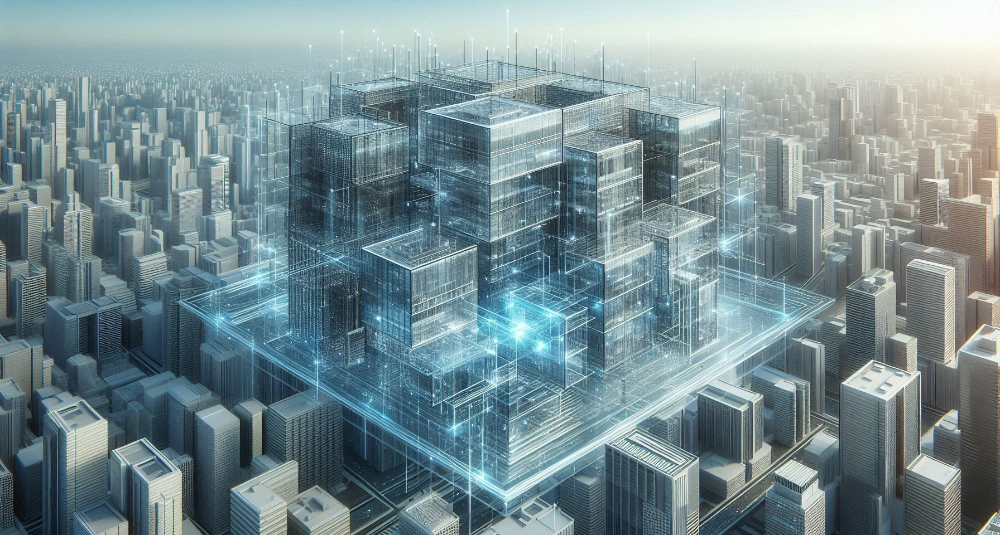Digital representation
The phrase digital representation is used in the standard 'BS ISO/IEC 30173, Digital twin — Concepts and terminology' to explain what a digital twin is, published in 2023 it describes Digital Twin as: "digital representation of a target entity with data connections that enable convergence between the physical and digital states at an appropriate rate of synchronisation.'
The digital representation being the digital version of the target entity, which is the subject of the digital twin. The standard describes these as being ‘real’ things like components, assets, systems and processes. The subject is then observed through data connections like sensors. Depending on the subject, the way it is represented may change. It may be useful to represent the shape of a component graphically (i.e. a 3D model), but a process or system may need to be represented more conceptually (e.g. as a diagram or a model notation). Much like with Building Information Modelling (BIM), digital twins aren’t about 3D models, they are about the exchange of pertinent information. Convergence is the act of coming together. In this instance, convergence can be achieved in three different ways:
- The digital representation changes to reflect the target entity (e.g. a component, which is being tracked, is moved. Once in its new position, its location is updated with new coordinates).
- The target entity changes to reflect the digital representation (e.g. someone sets a thermostat which is monitoring a living room. The thermostat triggers the room to warm up).
- Both the digital representation and target entity change to meet in the middle (e.g. a complex algorithm behind a series of interconnected digital twins may influence several entities and representations concurrently).
Finally the appropriate rate of synchronisation is the idea that convergence occurs as often as needed. For cases relating to life safety, near real-time may be a requirement. For other use cases, this convergence might happen less frequently.
[edit] Related articles on Designing Buildings
- Artificial intelligence and civil engineering.
- Big data.
- BIM.
- Blockchain.
- Connected digital twins.
- Defining the digital twin: seven essential steps.
- Digital Roads 2025.
- Digital Twins, A BSRIA Topic Guide TG25 2024.
- Engineering Smart Cities.
- Internet of things.
- Interoperability.
- Making the most of big data.
- Open data.
- Smart technology.
- Twin cities.
- What a digital twin could be.
- UsBIM.geotwin
[edit] External links
'Has ISO answered the question "What is a digital twin”? AT Journal issue 150, summer 2024 by Dan Rossiter FCIAT, Built Environment Sector Lead, BSI.
Featured articles and news
Grenfell Tower Principal Contractor Award notice
Tower repair and maintenance contractor announced as demolition contractor.
Passivhaus social homes benefit from heat pump service
Sixteen new homes designed and built to achieve Passivhaus constructed in Dumfries & Galloway.
CABE Publishes Results of 2025 Building Control Survey
Concern over lack of understanding of how roles have changed since the introduction of the BSA 2022.
British Architectural Sculpture 1851-1951
A rich heritage of decorative and figurative sculpture. Book review.
A programme to tackle the lack of diversity.
Independent Building Control review panel
Five members of the newly established, Grenfell Tower Inquiry recommended, panel appointed.
Welsh Recharging Electrical Skills Charter progresses
ECA progressing on the ‘asks’ of the Recharging Electrical Skills Charter at the Senedd in Wales.
A brief history from 1890s to 2020s.
CIOB and CORBON combine forces
To elevate professional standards in Nigeria’s construction industry.
Amendment to the GB Energy Bill welcomed by ECA
Move prevents nationally-owned energy company from investing in solar panels produced by modern slavery.
Gregor Harvie argues that AI is state-sanctioned theft of IP.
Heat pumps, vehicle chargers and heating appliances must be sold with smart functionality.
Experimental AI housing target help for councils
Experimental AI could help councils meet housing targets by digitising records.
New-style degrees set for reformed ARB accreditation
Following the ARB Tomorrow's Architects competency outcomes for Architects.
BSRIA Occupant Wellbeing survey BOW
Occupant satisfaction and wellbeing tool inc. physical environment, indoor facilities, functionality and accessibility.
Preserving, waterproofing and decorating buildings.























